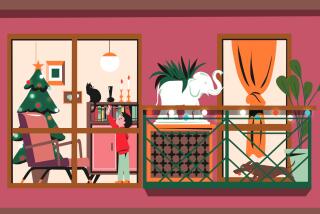Share the story of your wackiest, weirdest, most wonderful travel souvenir
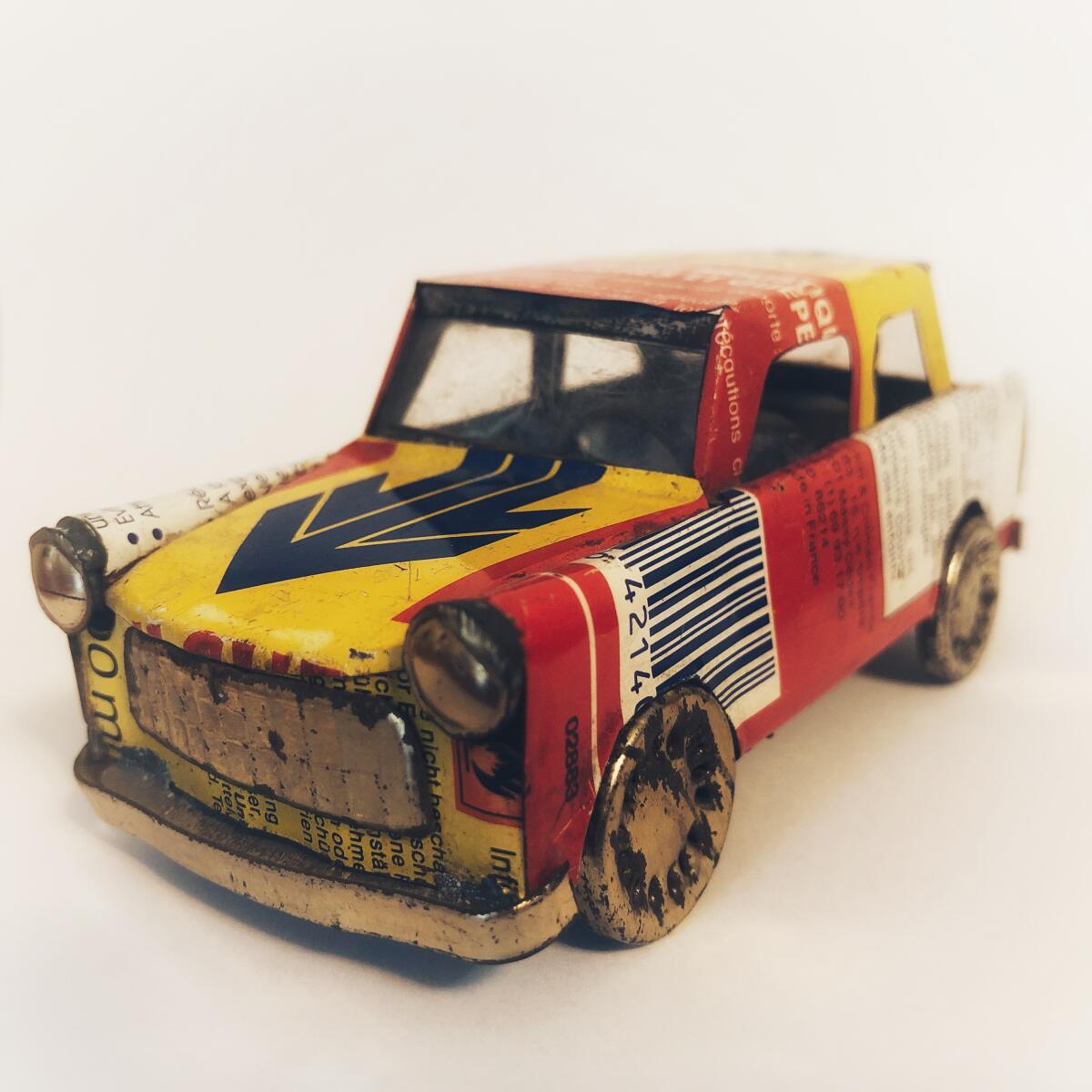
- Share via
The car is from Africa, by way of Germany. The bells are from Greek goats. The delicate glass pieces? Spotted in a Venetian alley shop.
These are souvenirs we love — images and details below.
And you, dear reader — what is that thing on the shelf behind you? Why is that thing on the shelf behind you?
As long as we’re all at home, we’d like to see and hear about your souvenirs. We’re asking you to share a photo of a favorite travel keepsake (no more than three per person, please), along with details about where you found it, when, and 50 to 100 words on how and why you acquired it. (That’s the Tell us about it box below.)
By the way, we don’t necessarily want to see the souvenir you love the most or the costliest one. We want the one with the best story attached.
To get things started, a few of us Times staffers have thrown in treasures of our own. But now reader contributions are rolling in too.
Now it’s your turn. Use the form below, or write to us at travel@latimes.com
Goat bells, Samothrace, Greece, 2019. The northern Aegean island of Samothrace (Samothraki) has 3,000 people and 45,000 goats. If hanging out on a beach, eating some great fish and cheeses (and, um, lots of roast goat) or exploring the ruins of an ancient cult temple sounds like a good time to you, it is a dream destination. I would wake early to listen to the waves and the sound of bells worn by a nearby herd of goats. So peaceful. I wanted to capture the sound if I could. I asked a staff member at our hotel where I could buy some. She thought long and hard, then called her father.
As it turns out, the only source of goat bells on Samothrace are goatherds, who often make the bells themselves and attach them to the goats with olive wood collars. By the end of the day, I was the proud owner of three well-weathered bells attached to handmade wooden collars. They smelled of the grassy warmth of livestock, and one still had a tuft of goat fur stuck in it! Now the bells are a favorite of all the kids who come to visit, and I don’t mind the cacophony as they play, because it reminds me of looking out across the sea on a late September morning.
—Sarah Schafer
Coin, Isle of Man, British Crown Dependency, 2013. In 2013 I was invited to participate in the Isle of Man Classic TT, a motorcycle road race on a 37.7-mile course on public roads. This coin is unique to the Isle, and it rode with me as I blasted down (closed) streets at 130 mph, on a Norton Commando. Famed Isle of Man racer Joey Dunlop is minted on one side. I carry it with me even now, as I navigate my motorcycle around the streets of Los Angeles at a somewhat more sedate pace.
—Scott Fabbro
“Planetary Quarantine,” Washington, D.C., liberated from a government hallway circa 1987. I collected this book (published in 1971) in a hallway pile outside of a recent retiree’s office at NASA HQ. Current events reminded me I had it. Author Lawrence B. Hall observed in his preface: “Throughout the recorded history of Planet Earth, innumerable invasions of one species of plants or animals by another often resulted in epidemic. Early man often interposed crude barriers, frequently only distance, between the source of the invading life forms and himself when he was the susceptible host ...”
“Periods of quarantine — 40 days during which an arriving vessel suspected of carrying contagious disease was strictly isolated in port — became worldwide practice ... . Quarantine measures have been replaced, only in recent time, by diagnostic methods of increased efficiency and by drugs and vaccines to inhibit epidemics ... .”
Would that our memories would last as long as our souvenirs.
— Karl Esch
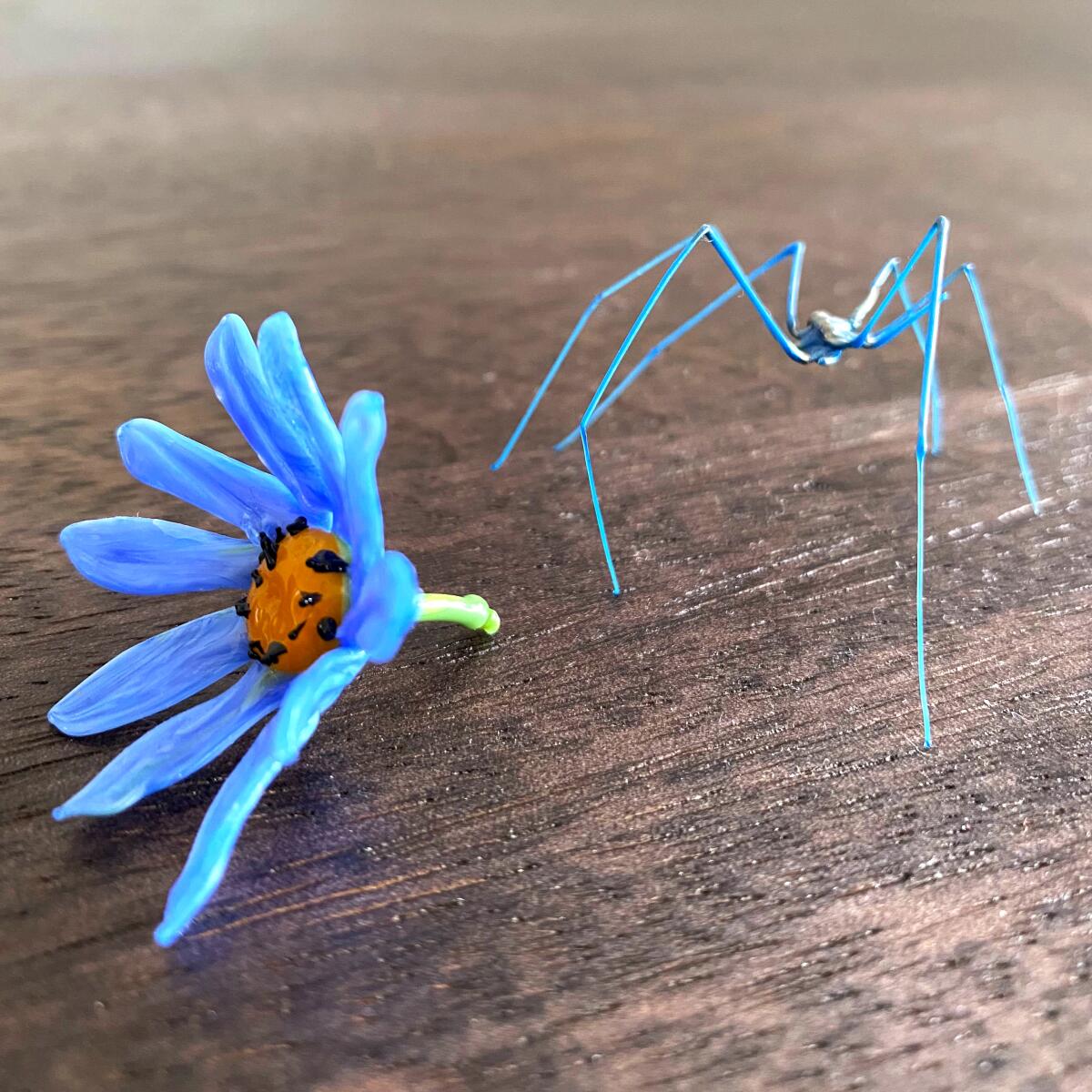
Little glass sculptures, bought in Venice, Italy, 2019. After hiking the Alta Via 1 in the Dolomites, my partner and I stopped by Venice for a few days. I wanted a tiny glass creature but could only find the same, mass-produced options in every tourist shop. Then, down an alley, we stumbled upon Bruno Amadi’s magical shop, where he’s been hand-shaping glass for decades. Beyond spiders and flowers you’ll find asparagus, dragonflies, bears, holly, snails and more.
—Amy King
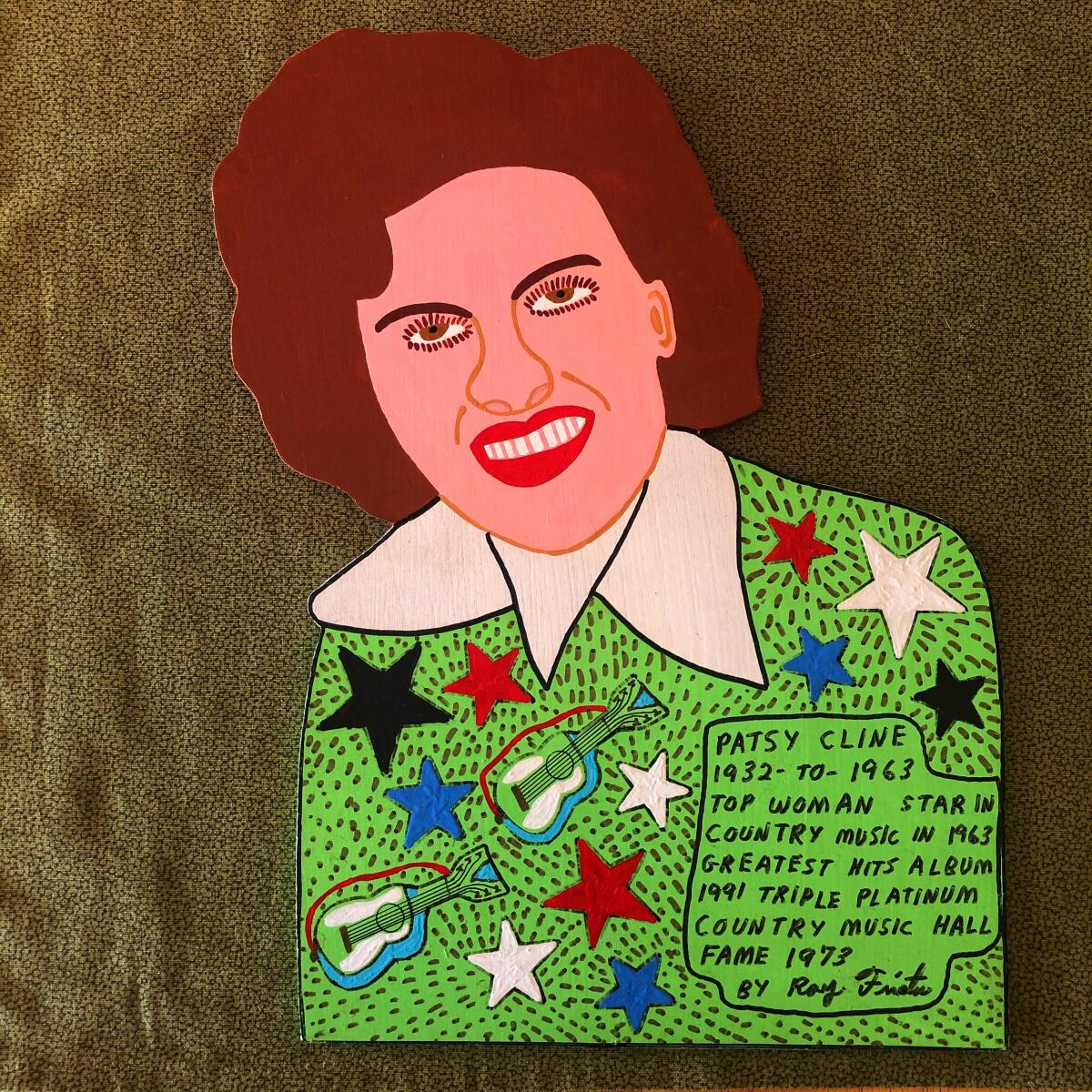
Patsy Cline, plywood cutout painting, 13 inches high, bought in a Mississippi gallery, 1998. That summer my wife and I drove the Mississippi River, Minnesota to Louisiana. This is by second-generation “outsider” artist Roy E. Finster of Georgia. I think maybe there had been a sale on green paint.
— Christopher Reynolds

I bought this toy Trabant in Berlin, circa 1995. The original “Trabi,” produced in East Germany from 1957 to 1990, was a beloved (and pitied) symbol of Communist utilitarianism. The toy is about globalism: My German vendor commissioned it from an artisan in Africa, who recycled a can of French insecticide.
— C.R.
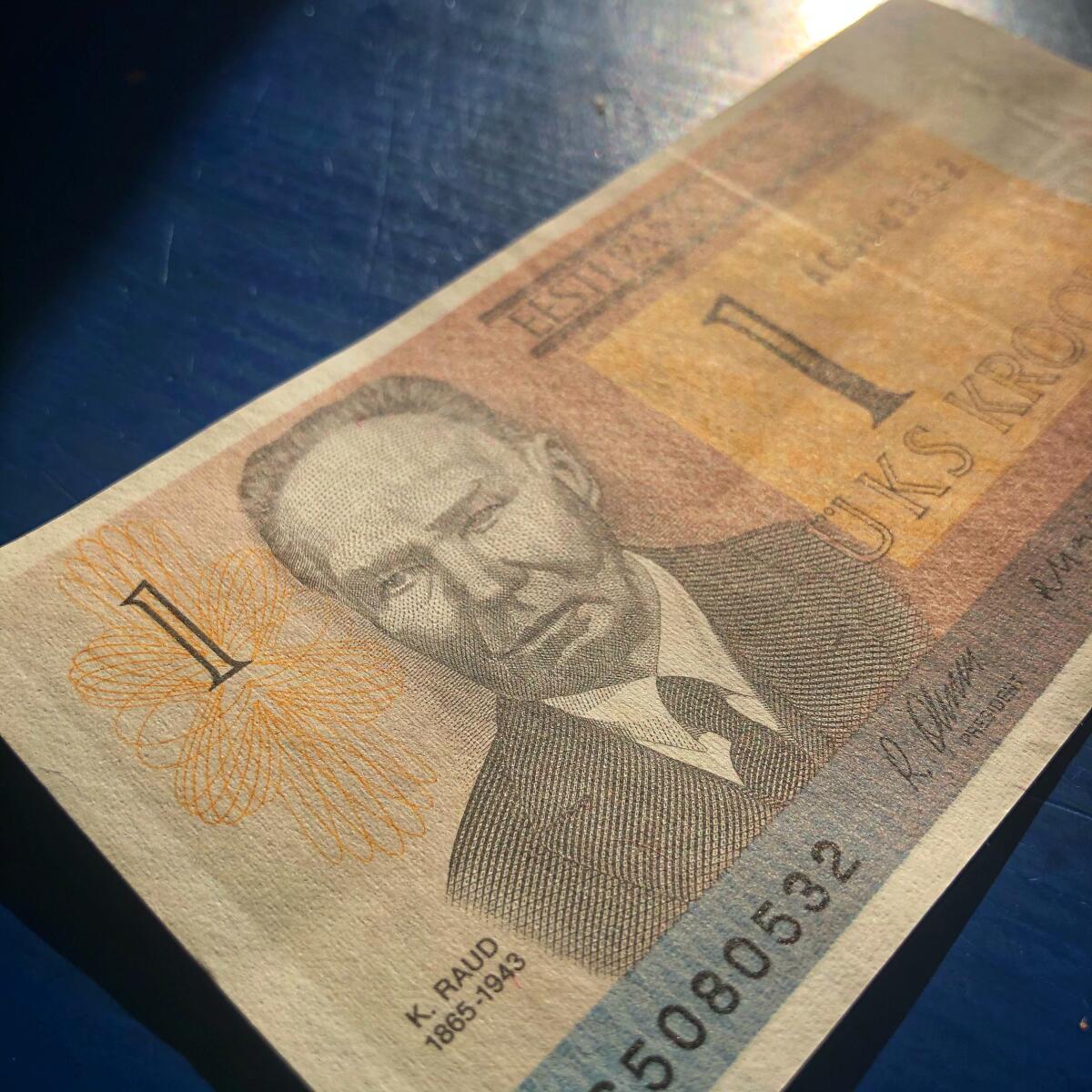
Estonian currency, 1992. Under the Soviets, Estonians had to use rubles. When Communism fell, Estonia printed its own bills (with homegrown heroes such as artist Kritjan Raud). In Tallinn, I lined up with grumpy residual Russian troops to trade rubles for kroons. My kroons are still crisp — but Estonians use euros now.
— C.R.
More to Read
Sign up for The Wild
We’ll help you find the best places to hike, bike and run, as well as the perfect silent spots for meditation and yoga.
You may occasionally receive promotional content from the Los Angeles Times.

